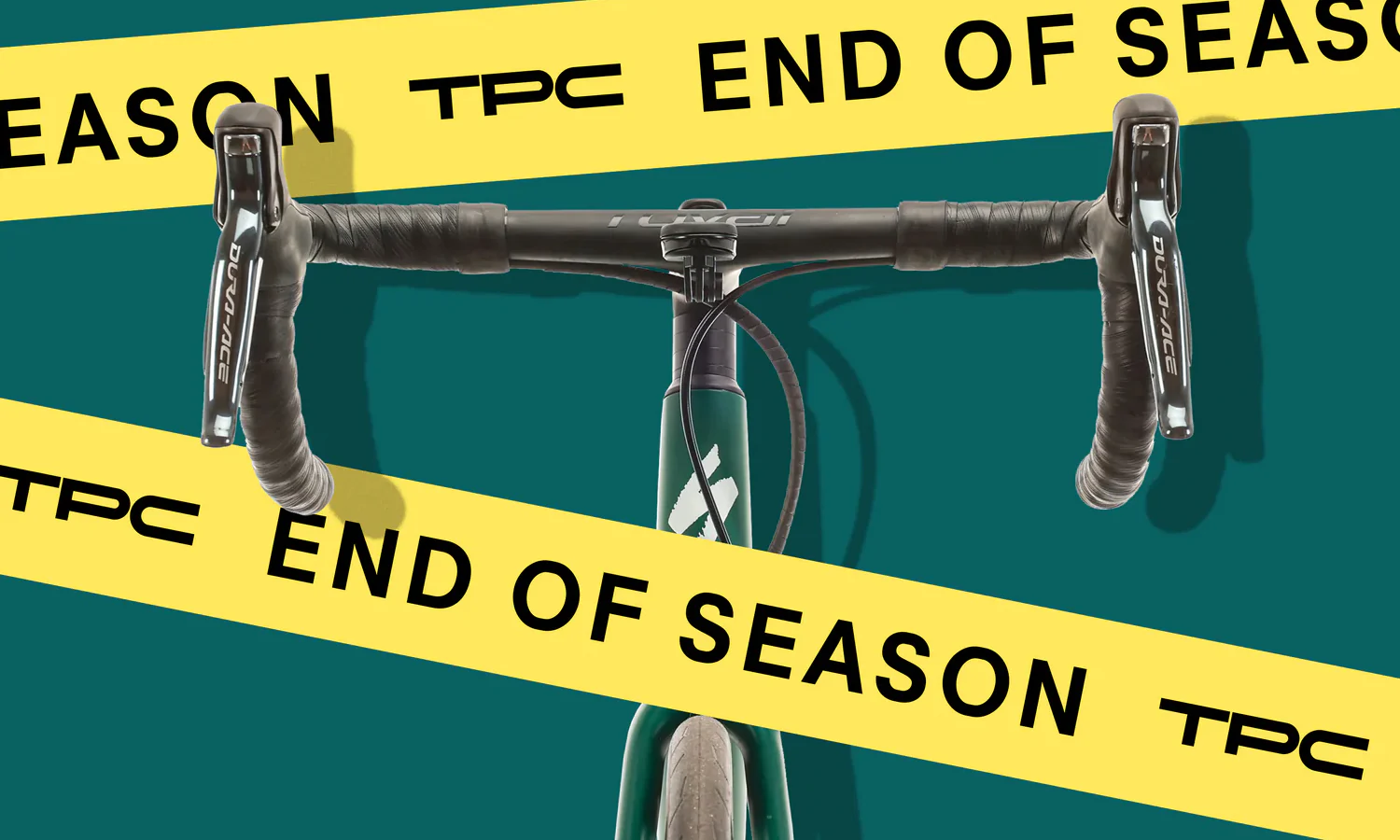There are two distinct periods in every cyclist’s life: A time when the thought of riding 100 miles seems crazy, and then when riding 100 miles seems like fun. 100 miles is a long way to travel no matter the vehicle. But doing it on a bike? That can be an all-day endeavor. So what does it take? Here are our tips and training suggestions for tackling your first triple-digit ride.
Choose a century ride — or create your own
First, don't just wing it. You need to decide when and where you’re going to take on 100 miles. You can do it during a race, a gran fondo, or you can just plan to do a big ride alone or with some friends. Whatever you do, it helps to set a date and make the commitment! If you just say, “I think I’ll ride a century sometime this year,” you might keep pushing it off until there’s a foot of snow on the ground. (Fat biking 100 miles is a whole different kind of adventure, by the way.)
When you do choose a date or an event, make sure that you have enough time to prepare and train. Six to eight weeks is good, 10 weeks or more is ideal. The last thing you want to do is “wing it.”

Create a training calendar & get some help from the experts
Set a consistent training calendar that is realistic for your time and ability. Don’t increase your training hours or mileage too quickly.
- If the bulk of your free time is on the weekend, plan shorter rides, strength training, or cross training midweek, and a long ride on the weekend. ("Long" is relative. It should be a distance that feels taxing but not so long that it destroys you. Consistency is key, and you want to be able to recover quickly enough from your long ride to continue riding the next week.)
- During your long rides, you should be riding at about 70% effort — not all-out, but not too easy. If this feels too hard at first, you can break up the ride into a few efforts at 70% pace with easy recovery in between.
- Increase your mileage/time on the bike by about 10% each week.
- Practice fueling during your longer rides. Regularly eating and drinking on the bike is key, and to complete century, you need to train your gut as much as your legs. Don't wait until you're hungry. If it helps, set a timer so you remember to eat something every 45-60min. Keep your hydration and nutrition topped up so you’re steadily eating between 150 and 300 calories every hour and drinking about a bottle an hour.
- Integrate warm-up, cool-down, and maybe some stretching into your ride time. You don’t want to jump into hard efforts cold. And you don’t want to swing into the garage just in time to grab a shower and dart off to work.
- Stick to your plan, but be flexible. If you plan on riding 60 miles, but you wake up exhausted, listen to your body. Do 20 or 30 miles and reschedule your long ride. A training calendar helps keep your goal achievable, but it’s not set in stone.
- One great way to get your long ride in is to make it a social event. Who doesn’t love getting a few friends together and heading out to a coffee shop or bakery the next county over? Just remember not to linger at your stops for too long.
- Fitting in a speed workout every week can help increase your fitness quickly. Try to ride 5-6 very hard (near maximum) efforts. These can range from 1-4 minutes. Work up to longer efforts as you train. At first you might want to start with just 30 seconds. Between each effort, recover at an easy pace for double the time of the effort. Once you’ve mastered these intervals, try them on a climb. With intensity, less is always more!
- If you primarily ride a trainer, but plan to do your century ride outdoors, be sure to get some outside time before your century too. Indoor cycling is great but can’t fully replicate outdoor conditions.
- Don’t forget to schedule rest! Exercising your muscles makes microscopic tears in them. But during rest, cells repair that muscle tissue. So, soak up at least one day of rest per week knowing that your muscles need it to get stronger.
If it all feels a little overwhelming, ask for help! A training app or a coach can help you structure your preparation around your goals and schedule. These plans take the guesswork out, and make it easier to train correctly and chart your progress.
For instance, TrainerRoad asks all kinds of questions about your current riding, your goal, and how much time you have (both to train and before your event). Then, it takes you through an FTP test and allows you to choose from 4,000 different workouts — for either outdoor or indoor riding. Even if you’ve ridden tons of miles, these workouts really improve strength and endurance to make you faster. There’s a huge difference between just going out and riding a couple hours a day and doing concentrated, specific work that maximizes your time.
According to Jonathan Lee, Communications Director at TrainerRoad, a good training program doesn’t take more work, just more specific work. “Knowing what to do is the toughest part, and that's why having a structured training plan is so helpful.”

The right equipment for long-distance cycling
You probably have everything you need for short rides, but 100 miles is very different from 30.
- Even if you don't care about tracking metrics like heart rate or power, a good GPS bike computer with navigation will help you on an epic ride. Just seeing the miles tick up in real time can be a huge motivator. If you want to get super serious, a heart rate monitor and a power meter are useful training tools.
- Do you have comfortable contact points like saddle, shoes, and handlebar tape that won't irritate you over a long ride? You may discover that you want to upgrade as your training rides get longer.
- Got pain, numbness, or persistent discomfort? If so it can be a good idea to get a professional bike fit to avoid any injuries. A comprehensive fit can also help you find the right saddle, handlebars, and shoes for a long day.
- Fueling strategy: How many bottles will you carry? Where can you fill up? Should you consider a hydration pack? Make a plan. I highly recommend a bar bag or top tube bag — it's great for packing lots of snacks, tools, and even a lightweight jacket or vest.
- What will you eat? It’s always better to be over-prepared. If you know you’ll be out for four hours and need 150-300 calories per hour, pack enough for five hours, and don’t count on that coffee shop or gas station being open. When in doubt, eat, even if you don't feel hungry. Staying ahead of nutrition and hydration is key to a successful long ride. Check out Our Favorite Cycling Nutrition Products.
- If you’ve been wearing the same biking shorts or bibs for a few years, now is a great time to get something new. A fresh chamois will be more supportive, better-fitting, and less prone to chafing on long days. But don’t save brand-new kit for the day of your big ride. Test it out beforehand to confirm you'll be comfortable.
The key to finishing a century: Have fun!
Riding 100 miles is a huge accomplishment. Train well, plan right, and control what you can. Not everything will go perfectly, but trust your process and enjoy the day.
“If you’re focused on enjoying the day, remember that being fast is fun,” says Lee. “It makes the impossible climb possible, and the enjoyable descent even more fun. If you’re focused on a specific time goal or placing, structured training will specifically prepare you for the demands of the event and help you reach your goals.”
No matter what you encounter out there, you'll learn from it, and it’ll help make your second 100-mile ride even better!

























